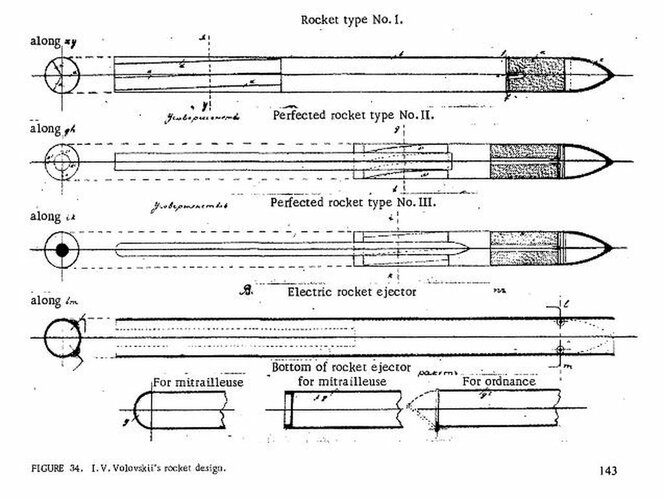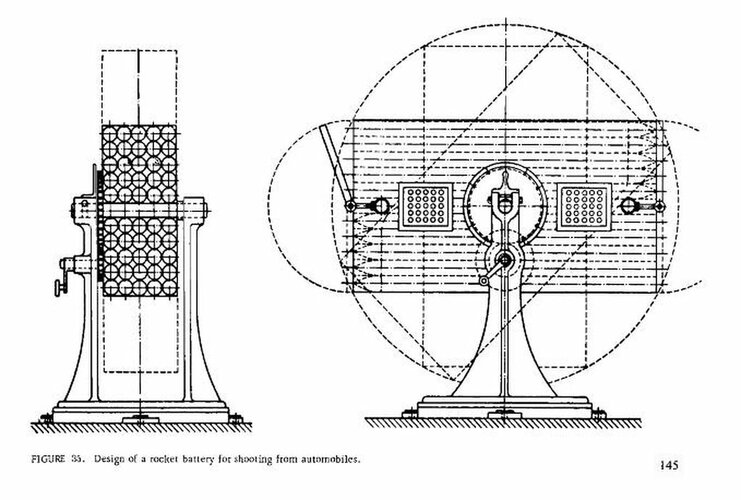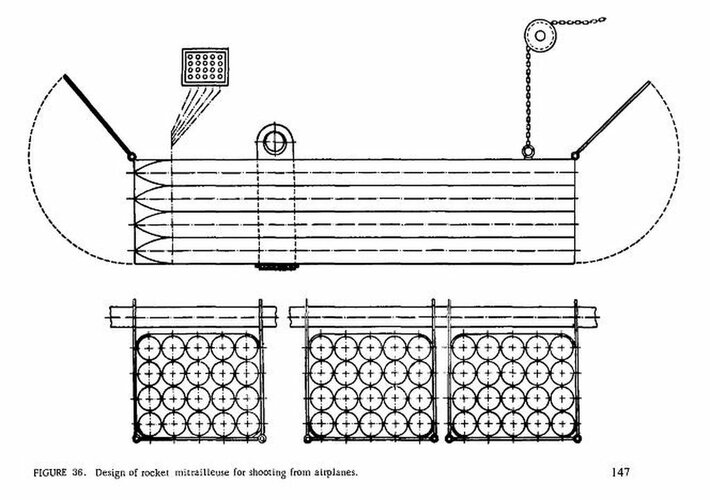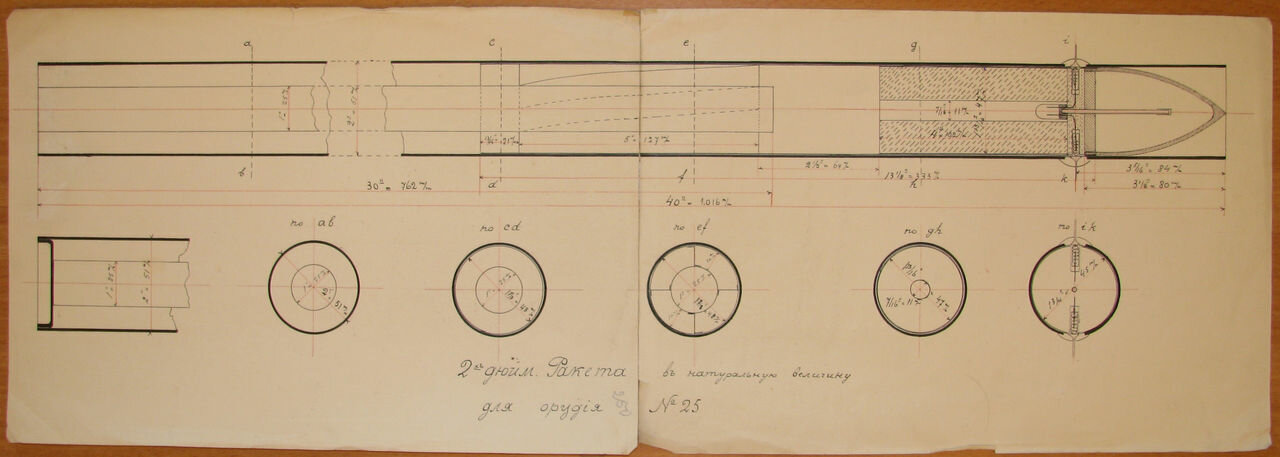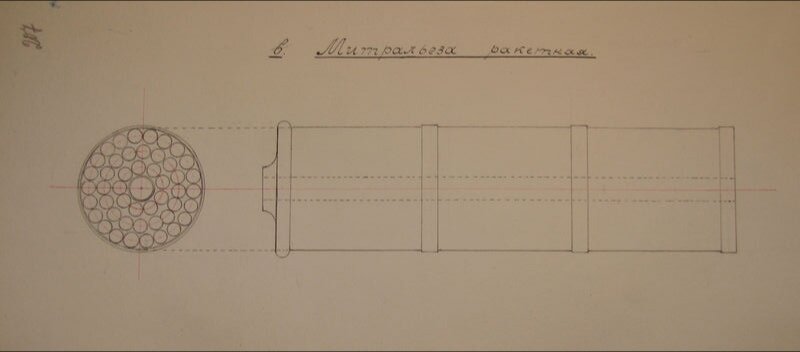klem
I really should change my personal text
- Joined
- 7 March 2015
- Messages
- 619
- Reaction score
- 1,250
In April 1912 Volovskii presented to the War Department a design for a military rocket (Figure 34, Type No.l), as well as designs for two launchers for launching rockets from automobiles and airplanes.The Artillery Committee rejected Volovskii's project, and feels that Volovskii's proposal is not at all innovatory and in itself does not constitute a technically well worked out project. "
D. D. Kuz'min-Korovaev, Head of the Chief Artillery Administration, however, did not agree with this opinion and added the following resolution to the Committee's conclusion: "The idea of using rockets as a weapon against aviators is new, and experiments should therefore be conducted On the basis of with Volovskii's rockets, regardless of their cost." this resolution, the War Department decided to inquire of Volovskii what ten rockets of his design would cost, with a view to conducting experimental shooting of these rockets at aerial targets jointly with the Airforce.
Volovskii, on the other hand, continued his work to improve his rockets. (Figure 34, Type No, II) by developing another version of the rocket (Figure 34, Type No. III), intended for grazing fire from airplanes against cavalry, as well as against enemy aircraft,This version, identical to type n ° II in its dimensions, was different and modified thus this new design was introduced in front of the the Artillery Committee in November 1912 which, after repeating its earlier opinion that "there are not sufficient grounds to expect it to give greater range or accuracy than the old model rockets currently in use, " nonetheless thought it possible to give the inventor means for a practical experimental check of his calculations. In view of the great interest manifested most recently in the development of the most perfect type of rocket. Volovskii's attempt to build a stand for simultaneous launching of several rockets is also of interest as a prototype of future multi-barrelled rocket launchers. He also developed schemes for a rocket battery to be installed on an automobile, and a rocket mitrailleuse for installation on airplanes.
The rocket battery (Figure 35) consisted of a certain number of ejectors of (equal to the number of rockets), arranged in straight rows in the form of a square and enclosed in a common shell (jacket). The spaces between the ejectors were filled with some light fireproof material. Each ejector was equipped with two contacts, wired to the energy source.
When the rockets were placed in the launchers (ejectors), contacts located on the forward part of the rockets touched the contacts on the ejectors. When this happened a corresponding bulb on the control panel lighted up. After launching of the rocket the contact was broken and the bulb went out. This made it possible to tell at any time how many rockets were ready for launching, and which they were. The layout of the rocket mitrailleuse for shooting from airplanes (Figure 36) was roughly similar, except that it did not require a cumbersome gun carriage and was considerably lighter.
-(RUSSIAN SOLID-FUEL ROCKETS "Rakety na tverdom toplive v Rossii" V. N. SOKOL'SKII-Edited by S. G. Kozlov- Izdatel'stvo Akademii Nauk SSSR- Moskva 1963-Translated from Russian- Israel Program for Scientific Translations Jerusalem 1967)
D. D. Kuz'min-Korovaev, Head of the Chief Artillery Administration, however, did not agree with this opinion and added the following resolution to the Committee's conclusion: "The idea of using rockets as a weapon against aviators is new, and experiments should therefore be conducted On the basis of with Volovskii's rockets, regardless of their cost." this resolution, the War Department decided to inquire of Volovskii what ten rockets of his design would cost, with a view to conducting experimental shooting of these rockets at aerial targets jointly with the Airforce.
Volovskii, on the other hand, continued his work to improve his rockets. (Figure 34, Type No, II) by developing another version of the rocket (Figure 34, Type No. III), intended for grazing fire from airplanes against cavalry, as well as against enemy aircraft,This version, identical to type n ° II in its dimensions, was different and modified thus this new design was introduced in front of the the Artillery Committee in November 1912 which, after repeating its earlier opinion that "there are not sufficient grounds to expect it to give greater range or accuracy than the old model rockets currently in use, " nonetheless thought it possible to give the inventor means for a practical experimental check of his calculations. In view of the great interest manifested most recently in the development of the most perfect type of rocket. Volovskii's attempt to build a stand for simultaneous launching of several rockets is also of interest as a prototype of future multi-barrelled rocket launchers. He also developed schemes for a rocket battery to be installed on an automobile, and a rocket mitrailleuse for installation on airplanes.
The rocket battery (Figure 35) consisted of a certain number of ejectors of (equal to the number of rockets), arranged in straight rows in the form of a square and enclosed in a common shell (jacket). The spaces between the ejectors were filled with some light fireproof material. Each ejector was equipped with two contacts, wired to the energy source.
When the rockets were placed in the launchers (ejectors), contacts located on the forward part of the rockets touched the contacts on the ejectors. When this happened a corresponding bulb on the control panel lighted up. After launching of the rocket the contact was broken and the bulb went out. This made it possible to tell at any time how many rockets were ready for launching, and which they were. The layout of the rocket mitrailleuse for shooting from airplanes (Figure 36) was roughly similar, except that it did not require a cumbersome gun carriage and was considerably lighter.
-(RUSSIAN SOLID-FUEL ROCKETS "Rakety na tverdom toplive v Rossii" V. N. SOKOL'SKII-Edited by S. G. Kozlov- Izdatel'stvo Akademii Nauk SSSR- Moskva 1963-Translated from Russian- Israel Program for Scientific Translations Jerusalem 1967)

